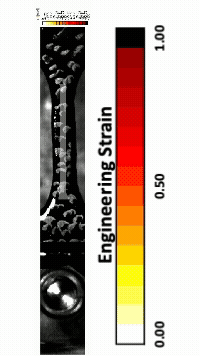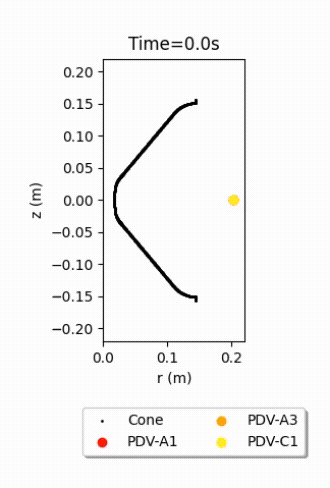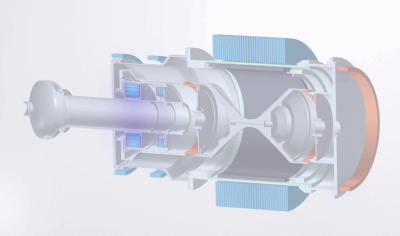General Fusion is working to bring fusion energy to the commercial power grid using Magnetized Target Fusion (MTF). In General Fusion’s MTF technology, magnetized plasma is injected into a cavity and rapidly squeezed using a rotationally stabilized liquid metal liner. In 2023, the engineers at General Fusion set out to develop a large-scale MTF demonstration machine called Lawson Machine 26 (LM26). This machine, which relies on the electromagnetic compression of a solid lithium liner, is intended to derisk General Fusion’s eventual large-scale commercial MTF power plant with the liquid liner. LM26 is a major step in the team’s fusion-powered vision for the future.
The design of the LM26 machine poses complex, multiphysics engineering challenges as the performance of the magnetomechanical compression of the lithium liner is critical to achieve the pressures and temperatures needed for fusion. To help tackle some of these challenges, General Fusion partnered with Veryst Engineering to quickly drive the design and enable successful prototypes.
According to Jean-Sebastien Dick, an engineering analysis manager at General Fusion, “Veryst quickly understood the multiphysics nature of the liner compression in our LM26 machine. They assembled a team of subject matter experts to propose a well-defined numerical and experimental strategy. Veryst integrated with our team to execute on this plan, helping us to accurately predict the loads on our structure. Their solution allowed us to keep an aggressive timeline and meet our milestones on time.”
General Fusion worked closely with the multidisciplinary team of experts at Veryst Engineering to develop and validate predictive computational models of the LM26 liner compression event. To accelerate their development process and derisk physical prototypes, General Fusion relies on a suite of simulation tools, including COMSOL Multiphysics. Modeling of the liner compression must accurately predict the required electromagnetic driving force and the nonlinear behavior of the solid lithium as it compresses plasma to create fusion and heating from compression.
Veryst identified that an accurate material model for lithium at the relevant temperatures and strain rates would be critical to developing predictive computational models. Sean Teller, Principal at Veryst, worked on-site at General Fusion’s headquarters to develop and execute a test plan to extract high quality data for material modeling. Using Veryst’s custom test machine with a high-speed camera and impact load cells, the team heated lithium to the processing temperatures and pulled the sample to failure to measure the mechanical response. The results of these experiments were then used to calibrate an advanced time- and temperature-dependent material model for high fidelity modeling of the liner compression events.
In parallel, the team of experts in nonlinear modeling and simulation at Veryst worked to refine the COMSOL models in development by General Fusion to improve accuracy and predictive capability. The LM26 model pushes simulation capabilities to the limit by coupling highly nonlinear solid mechanics, the Veryst calibrated material model, electromagnetic forces from modeled circuits to drive the compression of the lithium, and heat transfer between components. During the validation of their models in the development of LM26, General Fusion compressed 40 lithium liners using a small-scale testbed called Prototype 0 to validate their COMSOL models, shown to the right. The computational models allowed General Fusion to gain insight into their machine, accelerating the path to LM26.
LM26 began operation in early 2025, forming plasmas and testing liner compression. The team's project goals for LM26 are to achieve 1 keV, then 10 keV, and ultimately, scientific breakeven equivalent.





